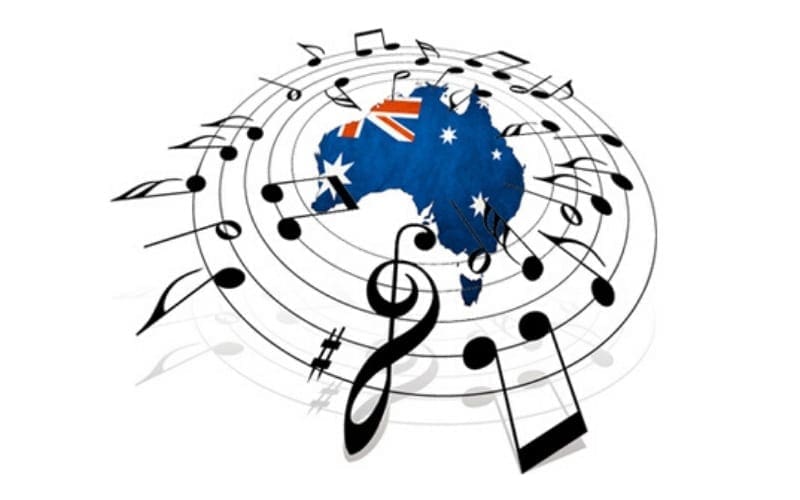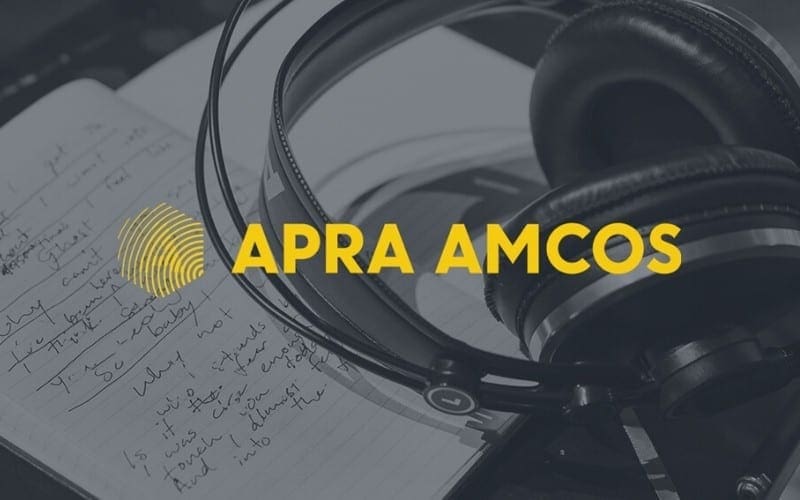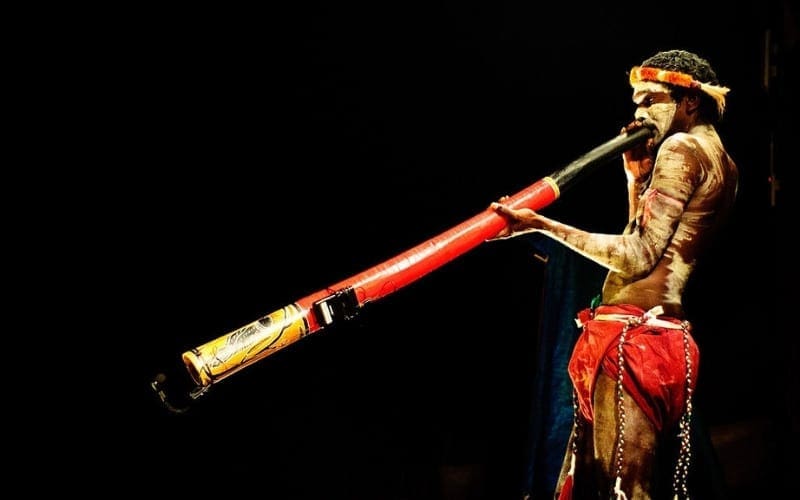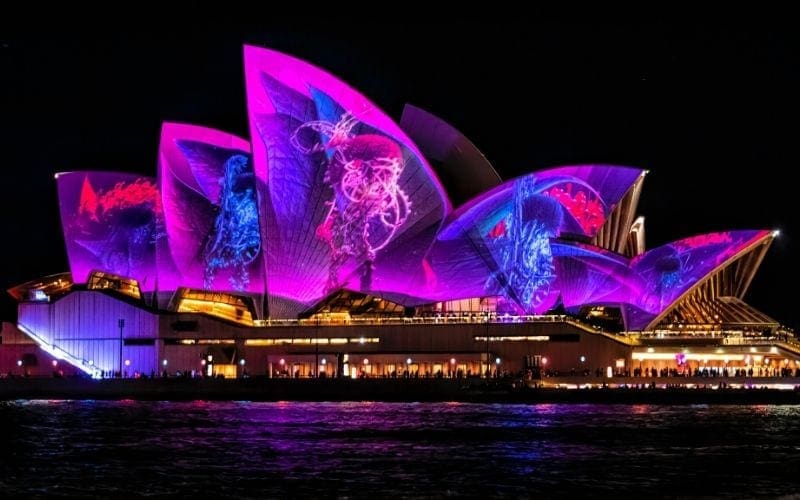
Although globally connected and distributing widely, with a population of under 28 million, Australia is a relatively small market for music. Compared to the big countries and markets around the world like the USA, India, China & Japan, it may seem small. However, it is significant as an industry sector within the country, and punches above its weight globally. This article hopes to give you an insight into the Australian Music Industry, including Performing Rights Organisation APRA AMCOS.
How Big Is The Australian Music Market?
Music and performing arts employs over 43,000 people in Australia. The venue-based live music industry supports employment of over 14,800 positions. Of course, there are also all of the independent songwriters, artists, composers, DJ’s, musicians etc.
According to IBISWorld, the 2023 revenue of the Australian music industry totals approximately $994.3m. Music Publishing and Sound Recording in Australia Market Size Growth in 2023 was 1.2%.
Revenue came from music streaming services such as Spotify, Amazon Music and Apple Music.
In terms of the biggest opportunity for growth, consumers typically have more funds to spend on non-essential purchases, such as online music content. Other content, such as films and television shows, use music licences, and demand for these shows also tends to increase when discretionary income rises.
On top of that, there are the royalties collected and paid from the collection societies (PRO’s etc). In the US, there are options as to which PRO to go through as a songwriter. However, in Australia there is only one of each. This means that there is one option each for recording royalties, mechanical licenses of music etc. This is similar to PRS For Music in the UK. I will now take a look at APRA AMCOS.
APRA AMCOS

APRA AMCOS is the only Australasian Performing Rights Association (PRO for music) in Australia. They represent over 100,000 members including songwriters, composers and music publishers. APRA AMCOS license organisations to play, perform, copy, and record member’s music. They are the go-to for music licensing in Australia. The APRA side of APRA AMCOS works with the writers/copyright holders’ writing and performing interests (similar to most PRO’s). AMCOS looks after the writers/copyright owners mechanical interests.
More Info About APRA AMCOS
We thought we would share a few videos from APRA AMCOS here for you to take a look at.
Why Are APRA AMCOS Important To The Australian Music Industry?
APRA AMCOS is an important organization in the Australian music industry because it collects and distributes royalties to songwriters, composers, and music publishers. It ensures that the creators of music are fairly compensated for their work, and helps to protect the rights of songwriters and composers.
APRA AMCOS also provides advice and support to music creators, and works to promote the music industry in Australia.
Sound Recording Royalty Collection: PPCA
Along with performing and mechanical royalties owed to songwriters and composers, if a song is recorded, the performance of that sound recording also has separate royalties that are payable. Usually, these royalties come from the recorded music being performed in entertainment, hospitality, or business establishments. But there may be a sound recording royalty as well, as there are royalties payable when music is played on radio or in certain sync situations.
The Phonographic Performance Company of Australia Limited (PPCA) is a national, non-government, non-profit organisation. They represent the interest of record companies and Australian recording artists. It provides licences to Australian businesses to play recorded music in public. The net fees are distributed to record labels & registered Australian artists who create the recordings (different from the writer area).
PPCA distribution for the 2017/18 financial year was over $43M distributed to licensors and registered Australian artists. It is worth noting that while PROs around the world are aligned and transfer performing and mechanical royalties, Sound Recording Collection Societies are not ‘linked’. So, PPCA only collects recording royalties in Australia and New Zealand. Therefore, an Australian recording artist with plays on US radio would have to also join Sound Exchange there.
Australian Arm Of CCLI

The Australian arm of CCLI (Christian Copyright Licensing International) is for all Christian congregational worship music played in church services. This is a worldwide organisation that licenses the playing, reproduction and printing of congregational music specifically used within church services.
It is worth noting that these three arms of collection societies are not exclusive. So, a songwriter who writes, performs and records congregational worship music for church services would be a member of APRA-AMCOS, PPCA & CCLI.
Additionally to the direct financial contribution to industry participants, there is a significant contribution to the country’s GDP from Australian music industry exports. A very good paper on this by the Australian Council of the Arts can be found here.
The Australian music industry might seem small in relation to other world markets. However, within the Australian economy, it is a significant industry sector.
International Impact of Australian Music
Furthermore, Australian artists and their music also has a reasonable impact on the world music scene.
Australian Music Artists and Bands

There are a number of Australian music artists that are household names around the world.
For example, if I said ‘ACDC’, most people would know the iconic rock band. Similarly, if the names ‘Keith Urban’ or ‘Kylie Minogue’ were offered, a lot of people would recognise them, or have listened to their music.
Depending on your genre of choice, other artists/acts that have had significant impact on the world include:
- Bee Gees, who were born overseas, but called Australia home for most of their career/lives
- Gotye
- Sia Furler. Besides her own music and songs, Sia’s co-writing credit is substantial and surprising to many. A Rolling Stone Magazine article lists 15 of her most popular writes/co-writes is here – some of which may surprise you.
- Iggy Azalea
- Vance Joy
- Tame Impala
There are also many more rising composers in the classical and stage areas as well as film. One young composer I would like to highlight is Chloe Charody. Since graduating in 2011, Chloe has been prolific in her output and recognition is growing rapidly in Australia and Europe. Along with the list of credits mentioned here, Chloe has been super busy since 2017! She has been on the study list for final year school students and is currently working on 3 more productions. This includes the stage adaptation of her children’s book (co-written with her husband).
Festivals and Events – Best Music Festivals In Australia

Australia is a big country, with a significant portion of the population regularly enjoying festivals, events, theatre and shows. They range from local to regional to nationally known events. Here are some of them:
- The Tamworth Country Music Festival. Australia’s largest music festival, and one of the top 10 music festivals in the world. The variety of country music is endless, with over 700 performers and 2,800 shows across 120 different venues. There are hundreds of buskers in Peel Street alone! This provides a diverse range of entertainment each day. It also attracts over 300,000 visitors across the 10 days!
- Perhaps the most significant event each year is the Sydney Mardi Gras. There are 200+ entry floats/groups, almost 4 hours viewing time and over 12,300 participants in this event each year. As an example, in 2019, Sydney’s Mardi Gras festival made a $131.1 million contribution to the NSW economy. It did this by bringing over 68,000 visitors to Sydney from interstate and around the world.
Other festivals include:
- Ultra Music Festival, which remains one of the biggest and most successful music festival brands in the world
- The Woodford Folk Festival. Another iconic cultural, music, arts environment and performance event each year featuring over 2000 performers, 35 venues and 438 acts.
For a list of 30 ‘must do’ Australian Music Festivals check out the link here.
Local And ‘Ethnic’ Music
Whether in a pub, a corner in a café, a small venue or an outback campfire – local musicians abound in every corner of Australia. While most music in pubs and clubs is often cover bands or karaoke, the small venue scene is full of original singer/songwriters.
Additionally, Australia is a diverse culture made up of many nationalities. Along with our ‘first people’, there are over 140 cultures from around the world making up our population. There is the Frankston, Victoria’s Spanish Festival, or Chinese New Year in the major cities’ Chinatowns, for example. At an event in the Japanese Garden in Sydney, there may be a Greek band playing in a local restaurant offering the food from that culture, so music truly is everywhere.
As an example, the link here gives you a little window into the popular ethnic and cultural festivals in Melbourne, Victoria alone.
Indigenous Music

An article on the Australian Music Industry is not complete without mentioning our indigenous music scene.
Indigenous music of Australia includes the music of Aboriginal and Torres Strait Islander peoples. This intersects with their cultural and ceremonial observances, through the millennia of their individual and collective histories to the present day.
There are pockets of places in the main cities where you can hear the genre. The Didgeridoo and other instruments have been incorporated into Australian music for years. You can experience the full mystical storytelling nature of the nation’s people, however. This can be found in northern parts of Western Australia, Queensland, and the Northern Territory.
‘Welcome To Country’ is a traditional ceremony that starts most major official and non-official events. This includes government, sporting and cultural events. There is the greeting, or the full ceremony (which can include song, music and dance). Through this, most Australians have had exposure to indigenous music.
Artists like Yothu Yindi and Midnight Oil brought indigenous music to more mainstream audiences. When Geoffrey Gurrumul Yunupingu came on the scene, his Intently spiritual voice brought increased following and interest in the individual, the culture and their music.
Conclusion – APRA AMCOS & The Australian Music Industry

So, that is the Australian music industry in a nutshell. As diverse and relatively small as it is, music forms part of the fabric of their society, nation and lives. With examples such as APRA AMCOS, Sony Music Australia, Universal Music Australia and the Australian Institute of Music, it’s clear that music is a big part of Australia’s society.
I hope that this has given an insight into the music scene in Australia, with our incredible live events and rich culture, as well as things like royalty collection societies and the process of releasing music here. If you haven’t visited before, as an artist, music enthusiast or otherwise – I would definitely recommend the trip!









